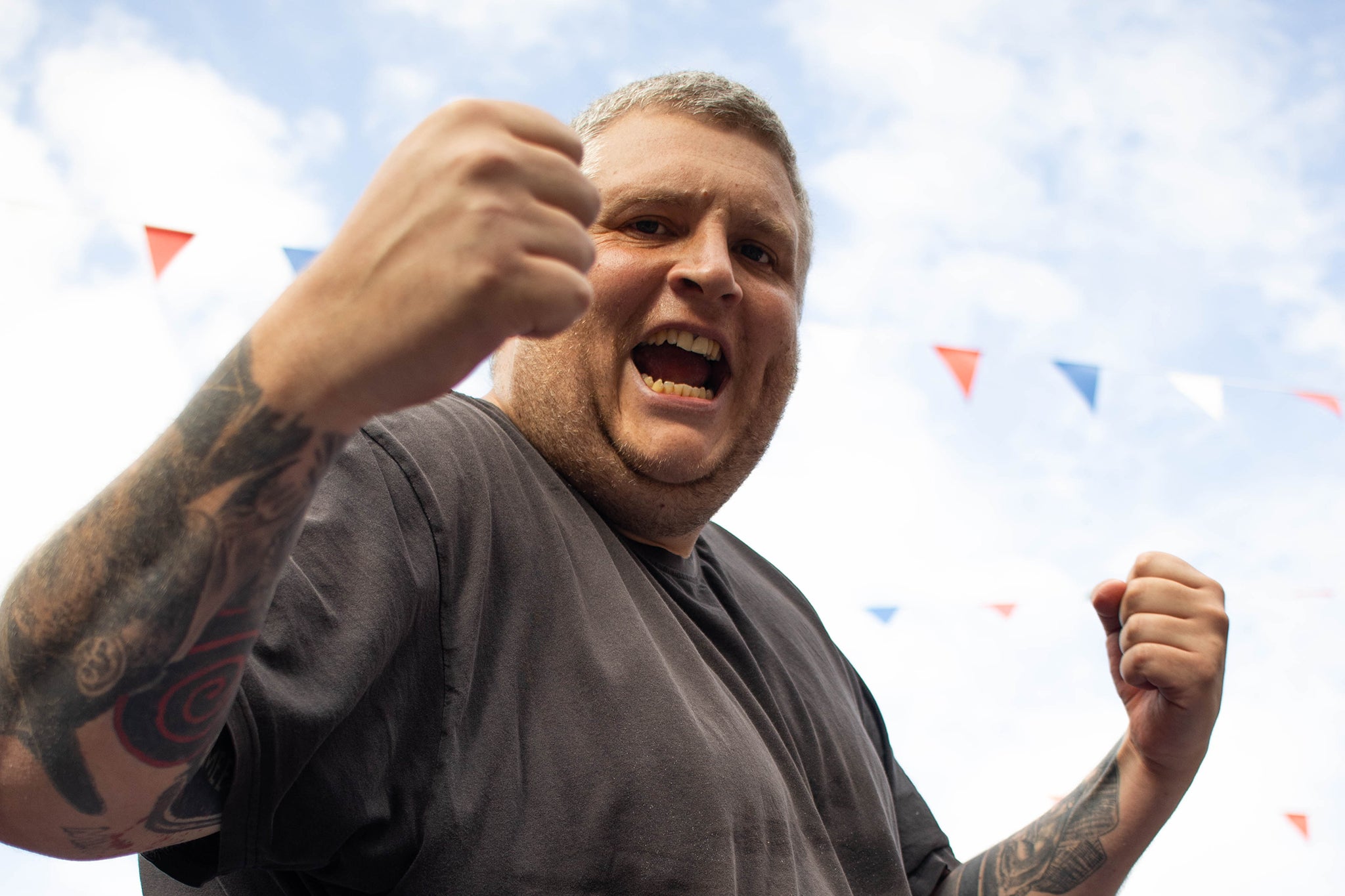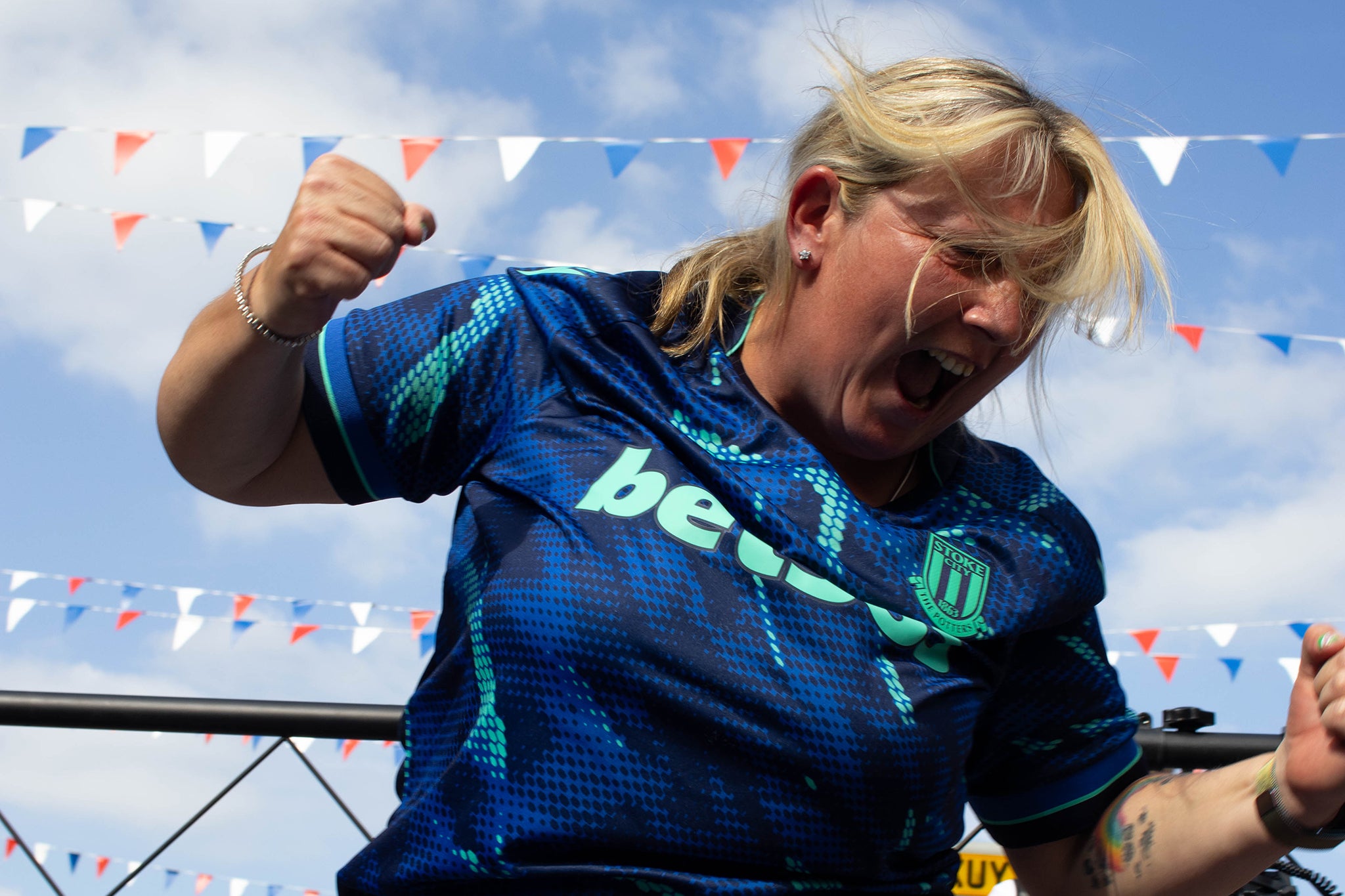How a small town in Derbyshire became the toe-wrestling capital of the world
For 50 years, Ashbourne has played host to an annual event in which ordinary people compete for ‘best in toe’ at one of the strangest competitive sports in the world. Elizabeth McCafferty went to watch from the sidelines

Your support helps us to tell the story
From reproductive rights to climate change to Big Tech, The Independent is on the ground when the story is developing. Whether it's investigating the financials of Elon Musk's pro-Trump PAC or producing our latest documentary, 'The A Word', which shines a light on the American women fighting for reproductive rights, we know how important it is to parse out the facts from the messaging.
At such a critical moment in US history, we need reporters on the ground. Your donation allows us to keep sending journalists to speak to both sides of the story.
The Independent is trusted by Americans across the entire political spectrum. And unlike many other quality news outlets, we choose not to lock Americans out of our reporting and analysis with paywalls. We believe quality journalism should be available to everyone, paid for by those who can afford it.
Your support makes all the difference.Toe-wrestler Lisa Shenton is sitting on the floor of a pub in Ashbourne, Derbyshire, and stretching out her thigh muscles. “It’s the 14th year I’ve competed,” she tells me, while surrounded by buckets of soapy water for competitors to scrub their feet. “I’m currently the six-time world champion and I plan on making that seven today.”
It is late August and around 200 people – including myself – have gathered in Ashbourne’s market square to watch 28 toe wrestlers fight for victory. An 8ft stage has been erected; on top of it has been placed a “toedium” for competitors to duke it out. The goal of toe wrestling is to push your opponent’s foot onto a horizontal board using only your big toe, which is interlocked with the big toe of your competitor. You both begin with your right foot, and once one of you has scored a point, you both go at it again with your left.
Strangers’ toes have been annually interlocked in Ashbourne for the last 50 years. It all began in 1974, when a group of men began a booze-fuelled brainstorm to try and create a sport they’d actually be good at. Absurdly, this was toe wrestling. It quickly went global, with people travelling from India, Japan, Canada and the rest of the UK to compete and cheer on from the sidelines. It was actually a Canadian who won the inaugural toe wrestle back in 1975.
The sport has been historically dominated by men, but women have gradually been well-represented – today’s event sees eight women competing, the highest in the competition’s history. Shenton, who is wearing a blue football shirt that reads “Twinkletoes” after her toe-wrestling alias, has been a trailblazer. She first stumbled upon the sport while drinking in the Royal Oak Inn in 2008. “I decided to give it a go after a few pints,” she tells me. Since discovering she had a knack for it, she’s extensively prepared for every competition. “I train with weights on my ankle, [do] stretches and toe wrestle with my partner, Ruth, as much as possible over the year. Most people don’t realise how much skill is actually required in the sport – there is way more strength and core muscle required than people understand.”
Today, the name on everyone’s lips seems to be Ben Woodroffe, the three-time world toe-wrestling champion, who is known on the circuit as “Toe-tal Destruction”. “He’s very difficult to beat for sure,” says Clive de Silva, who’s been travelling up to Ashbourne from London to compete for the last 15 years. “I reckon I could come second or third [today],” he says. “People who know I do this think it’s a bit eccentric. I don’t think I’d last more than two minutes with proper wrestling, but at least I have more of a chance with my toes.”
“I heard about the sport about 20 years ago,” says a woman named Nina, who I spot watching from the sidelines and who I discover is Woodroffe’s partner. “Now I’ve been practising with the world champion.” She has reservations about competing herself. “I need to work more on my technique, so I won’t be entering this year.” Next to Nina is her mother, Jacqueline. “I never thought my daughter would be dating the world champion toe wrestler,” she laughs.
We need to recruit enough people from different countries to get toe wrestling the worldwide recognition it deserves. I have no doubt that toe wrestling stands a chance if breakdancing does
Woodroffe is 35 and stands at 6ft 4in, with piercing blue eyes and a wide, kind smile. He’s a big friendly giant of sorts, but not to be messed with when his dogs are out – impressively, or scarily, he’s even had his toenails removed to boost his chances of winning each match. “This sport has what it takes to be in the Olympics,” Woodroffe tells me. He’s just been in Paris to promote the sport to a new audience, and even managed to wrestle some people in the street. “We need to recruit enough people from different countries to get toe wrestling the worldwide recognition it deserves. I have no doubt that toe wrestling stands a chance if breakdancing does.”
Many involved in the toe-wrestling community are disappointed the sport isn’t taken more seriously. Ben & Jerry’s ice cream once sponsored it, but hopes that their involvement would help bring it some legitimacy were dashed – their ownership of the toe-wrestling trademark also expired in 2023. Similarly, attempts were made in 1998 to enter toe wrestling into the Olympics, to no avail. A recent rebrand given to the sport – one that casts it in a far more serious light – has made many set their sights on applying again in the future, though. For now, at least, the sport’s taken hold in Ashbourne. It gives Woodroffe some hope. “The town hall now even holds our trophies,” he beams.

Shortly after I speak with Woodroffe, the fights begin. Over three hours, more than two dozen competitors go toe to toe, across separate categories for men and women. If you’re curious about hygiene, by the way, all are asked to sign a waiver in advance stating that their feet are free from infections. Some here have been toe wrestling for years, others are competing on a whim. Adam, from Warrington, was approached on the street mere hours before the competition began. “I never knew this existed,” he tells me. “This is a fully spontaneous decision.”
Adam is good, but not good enough to knock out Woodroffe, who beats him in under 20 seconds. Many others are knocked out with similar speed. As the fights continue, some competitors struggle to maintain enough foot grip to carry on. Others have quite small toes, which can make it difficult for them to compete. Surgical bandages and gaffa tape are brought on stage and used to stop toes from slipping away from their rivals.
Shenton faces off against a woman known as Bunion Buster. They duel for around 10 minutes and experience grippage issues – their big toes keep sliding out from their interlocked position, and a 30-minute break is issued before they restart their match. Once they return to the toedium, their big toes now wrapped up in gaffa tape for easier friction, Shenton manages to get the upper hand (or, well, upper foot). She pushes Bunion Buster’s foot to the board in both rounds, screaming and punching the air in victory.

In the men’s final, Woodroffe finds himself up against 17-time world champion Alan “Nasty” Nash. Stoke-based Nash is now 65, but has twice come out of retirement purely in the hopes of beating Woodroffe. He climbs onto the stage wearing a top hat and a British flag as a cape. The crowd roars as the men bandage their toes together. Things quickly grow violent – with one clean snap, Nash breaks Woodroffe’s toe as he tries to force it onto the board. Said toe is at a visible, grisly right angle now, but Woodroffe still somehow manages to counter the move and slam Nash’s toe to the board instead. “Come on!” Woodroffe shouts. He and Shenton take to the stage together, claiming their prizes of £500 each.
As I watch from the sidelines, I’m touched by the buzz in the crowd – nearby pubgoers have spilled out into the street, viewers are in tears, families pledge to return next year. It’s an eccentric sight, but a distinctly British one – driven by people eager to give something a go and embrace the unknown, whatever others might think.
“Pain is temporary,” Woodroffe tells me, after breaking away from a heartfelt embrace with Nash. “Being a champion is for a lifetime.”
Join our commenting forum
Join thought-provoking conversations, follow other Independent readers and see their replies
Comments